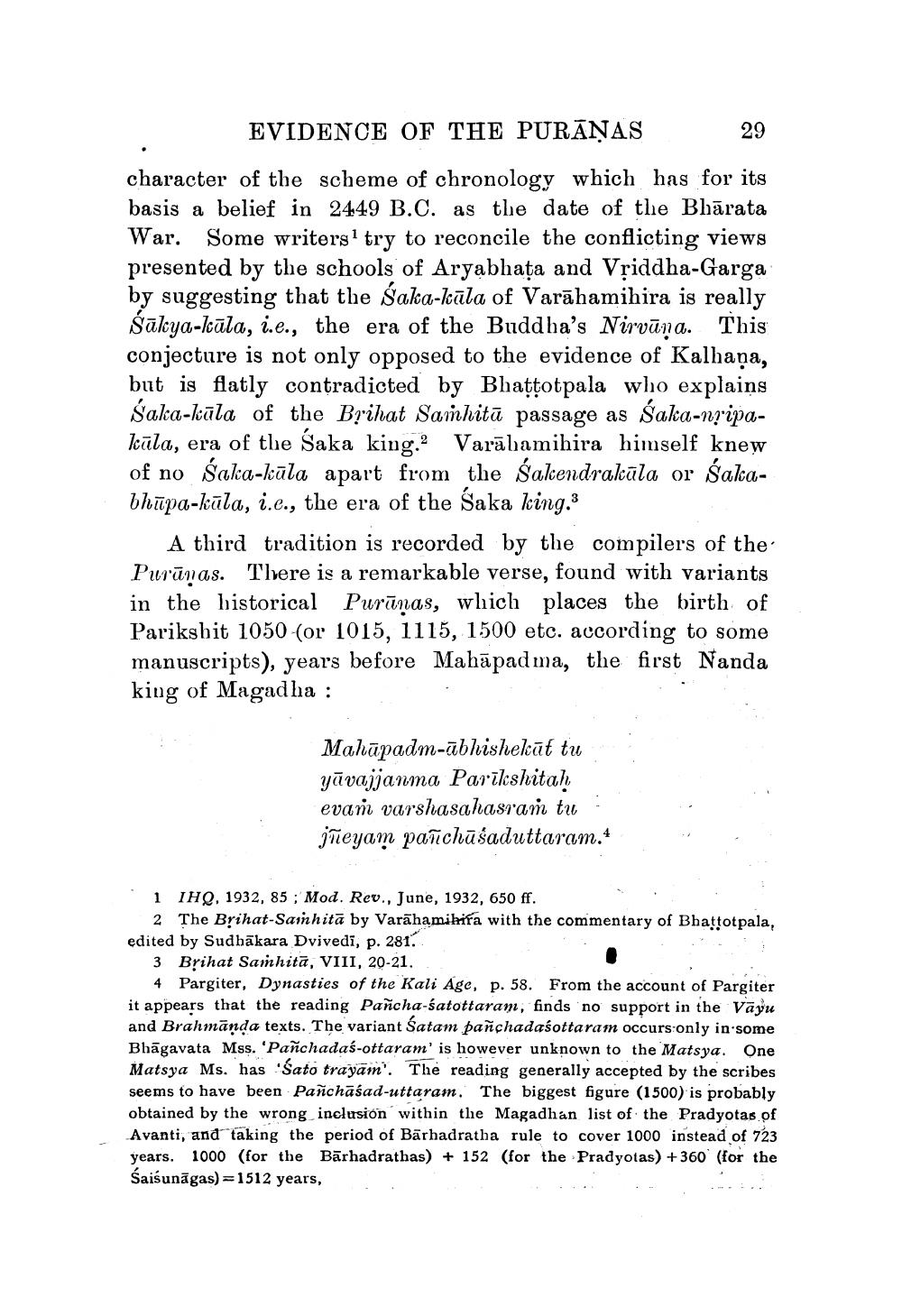________________
EVIDENCE OF THE PURĀŅAS 29 character of the scheme of chronology which has for its basis a belief in 2449 B.C. as the date of the Bhārata War. Some writers' try to reconcile the conflicting views presented by the schools of Aryabhata and Vriddha-Garga by suggesting that the Saka-kāla of Varāhamihira is really Sākya-Itāla, i.e., the era of the Buddha's Nirvūna. This conjecture is not only opposed to the evidence of Kalhaņa, but is flatly contradicted by Bhattotpala who explains Saka-kāla of the Brihat Samhitā passage as Saka-n?ipakūla, era of the Saka king? Varābamihira himself knew of no Saka-kāla apart from the Śakendrakāla or Śakabhupa-kūla, i.e., the era of the Saka king.
A third tradition is recorded by the compilers of the Purūnas. There is a remarkable verse, found with variants in the historical Purūnas, which places the birth of Pariksbit 1050 -(or 1015, 1115, 1500 etc. according to some manuscripts), years before Mahāpadma, the first Nanda king of Magadha :
Mahāpadm-ābhishekāt tu yāvajjanma Parikshitah evam varshasahasram tu : jñeyam pañchūśaduttaram.
1 HQ, 1932, 85; Mod. Rev., June, 1932, 650 ff.
2 The Brihat-Samhitā by Varāhamihira with the commentary of Bhattotpala, edited by Sudhākara Dvivedi, p. 281.
3 Brihat Samhitā, VIII, 20-21.
4 Pargiter, Dynasties of the Kali Age, p. 58. From the account of Pargiter it appears that the reading Pancha-śatottaram, finds 'no support in the Vayu and Brahmānda texts. The variant Satam pañchadasottaram occurs only in some Bhāgavata Mss. 'Panchadas-ottaram' is however unknown to the Matsya. One Matsya Ms. has "Sato trayam'. The reading generally accepted by the scribes seems to have been Panchāśad-uttaram. The biggest figure (1500) is probably obtained by the wrong inclusion within the Magadhan list of the Pradyotas of Avanti, and taking the period of Bārhadratha rule to cover 1000 instead of 723 years. 1000 (for the Bārhadrathas) + 152 (for the Pradyotas) + 360 (for the Saisunāgas) =1512 years,




